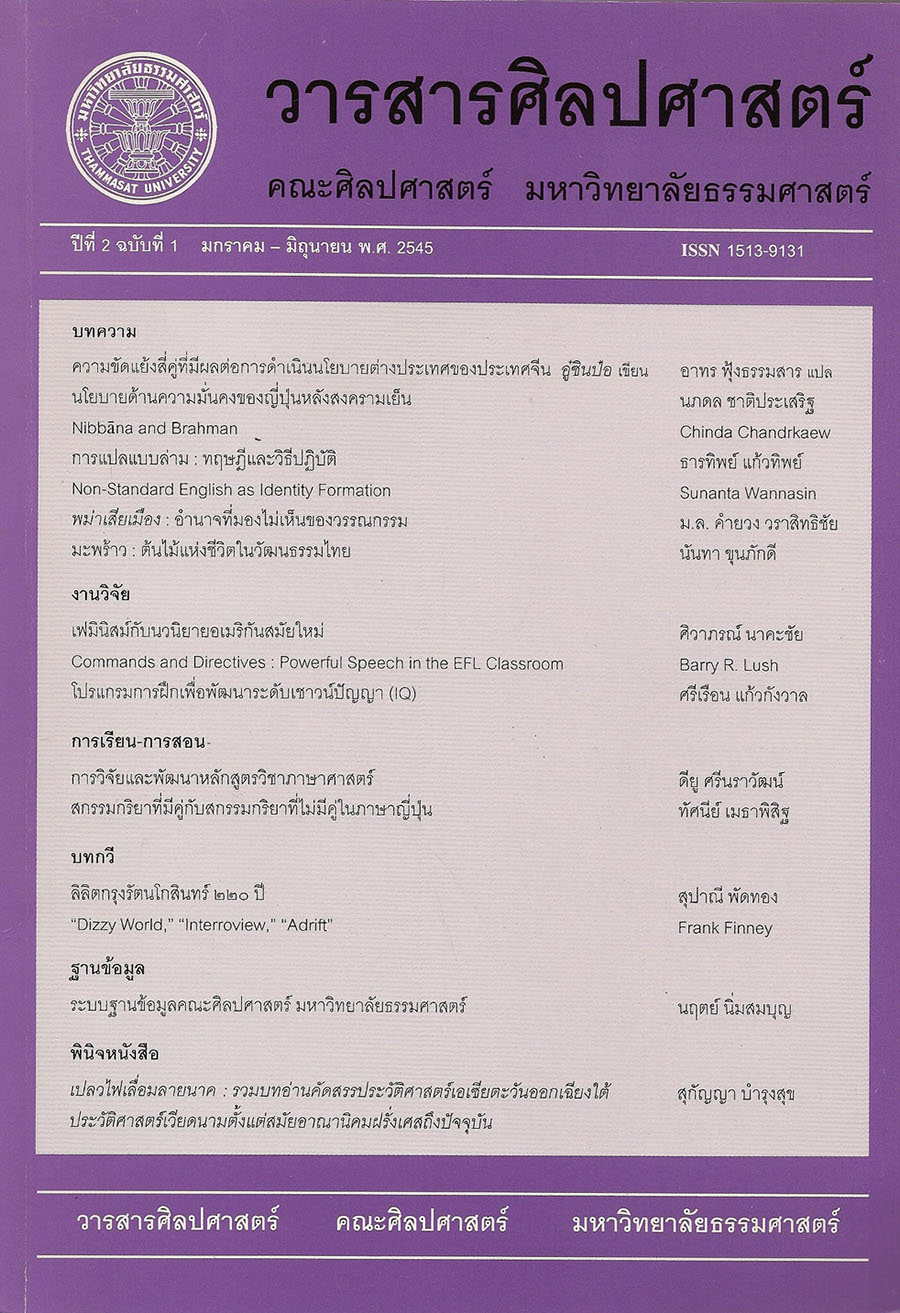สกรรมกริยาที่มีคู่กับสกรรมกริยาที่่ไม่มีคู่ในภาษาญี่ปุ่น
Main Article Content
บทคัดย่อ
สกรรมกริยาในภาษาญี่ปุ่นแบ่งได้เป็นสองกลุ่มคือ กลุ่มสกรรมกริยาที่มีคู่กับกลุ่มสกรรมกริยาที่ไม่มีคู่ ในบทความนี้มุ่งชี้ให้เห็นถึงความแตกต่างทางความหมายและการใช้ระหว่างสกรรมกริยาที่มีคู่ และสกรรมกริยาที่ไม่มีคู่ในภาษาญี่ปุ่น กล่าวคือ สกรรมกริยาที่มีคู่ คือ กริยาที่เน้นผลของการกระทำ ส่วนสกรรมกริยาที่ไม่มีคู่ คือ กริยาที่เน้นกระบวนการ และจากการเปรียบเทียบกับกริยาในภาษาไทย ทำให้เห็นว่าสกรรมกริยาที่มีคู่นี้ มีความสัมพันธ์อย่างใกล้ชิดกับรูปทำให้ รูปถูกกระทำ รวมทั้งรูปสามารถ นอกจากนี้ยังได้กล่าวถึงลักษณะเฉพาะของหน่วยคำในกริยาประสม
Japanese transitive verbs can be divided into two groups “transitive verbs with counterpart” and “transitive verbs with no counterpart”. This article aims at pointing the differences of meaning and usage between these two groups. Transitive verbs with counterpart are verbs that focus on the result of the action, whereas those with no counterpart are verbs that focus on the action. Comparing with verbs in Thai, it is obvious that the transitive verbs with counterpart in Japanese are closely related with the causative passive and potential forms. Moreover, the composition of complex predicates in Japanese are also discussed.


